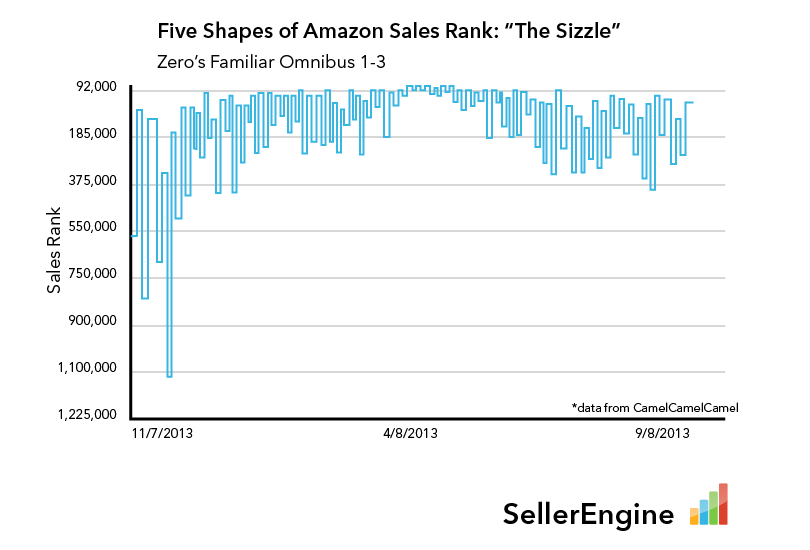Last week, we talked about the importance of historical sales rank and showed two common shapes that can help you make smarter sourcing decisions.
Today we’ll look at 2 more shapes. Keep reading to learn more.
The Sizzle

The Sizzle is an item that historically has an a poor to average sales rank, followed by a period of extreme popularity likely followed by a decline. Items like this are very dangerous because if you catch them when they’re at the top it’s easy to believe that things will never change.
Unfortunately, estimating the duration a Sizzle’s popularity is impossible. If they a Sizzle becomes a Slip, you might have to offer a steep discount to cut your losses.
To spot a Sizzle, look for a sudden jump in Sales Rank over a very brief period of time. If you start to see the downward trend, tread carefully. You might be buying at the wrong time.
This example is a classic Sizzle caused by the death of a book’s author. In this case it’s a generally unknown author, Noboru Yamaguchi, who created the manga Zero’s Familiar.
The Slow
A Slow is an item that sells once or twice every other week. Be very careful not to confuse this with “The Steady” – the difference between them is in the numbers. While a Steady hovers in the low-thousands, depending on the category, a Slow will have a less favorable Sales Rank. Over the past year such an item might have a hundred sales, at most.
You can easily tell when a Slow item sells by the shape of the history, which spikes sharply up with every sale. Each spike represents a sale or two, at the very most. Because of the low number of sales, the Sales Rank drops and rises dramatically each time – just count the spikes to estimate the sales volume.
These items are good to have in your inventory, if you’re OK with waiting for sales. In this case you also want to really pay attention to your competitors – losing 1 sale per week to an aggressive competitor could mean losing 100% of all sale opportunities that month.
Next Week
Next week, we’ll talk about the final Sales Rank Shape and show how you can create these types of charts for yourself.